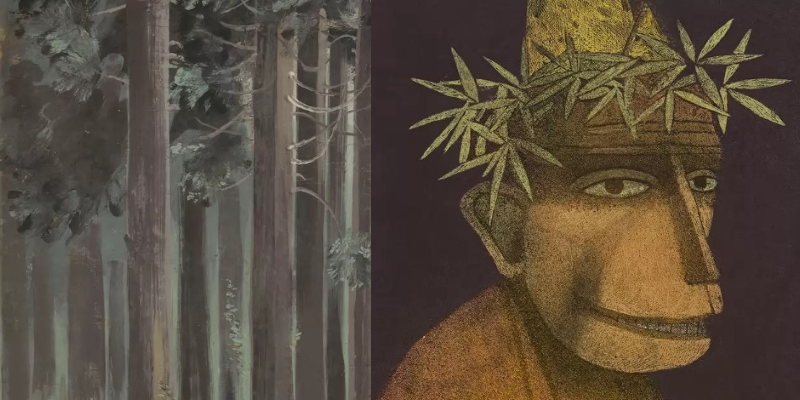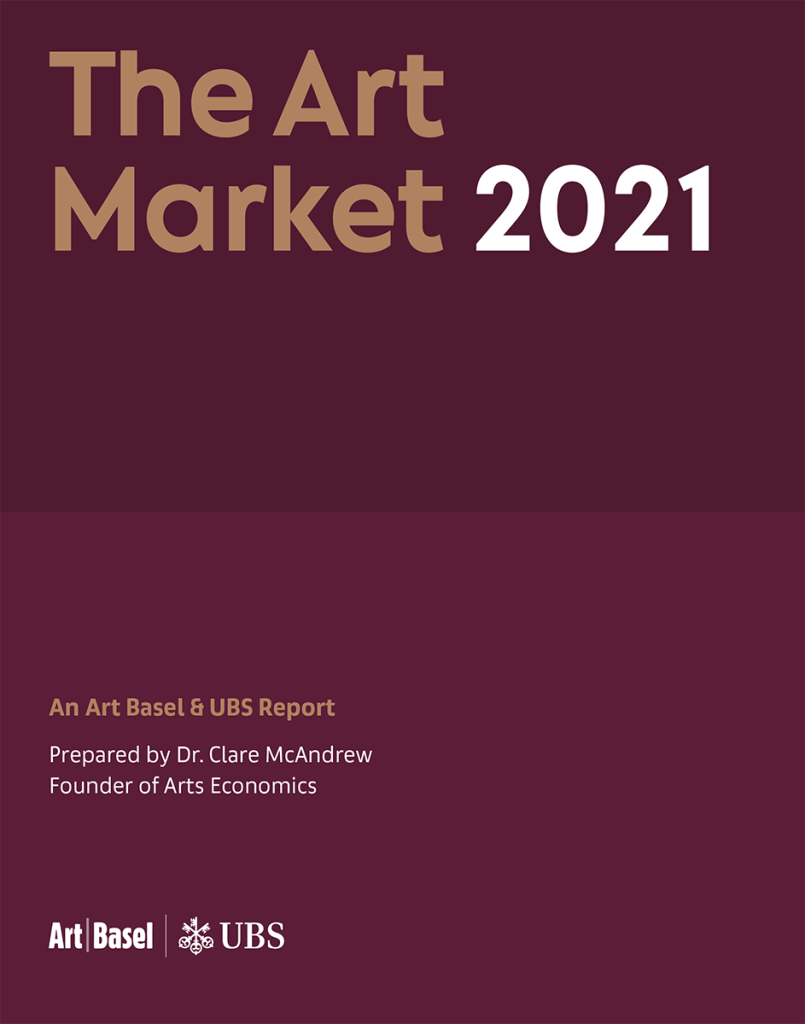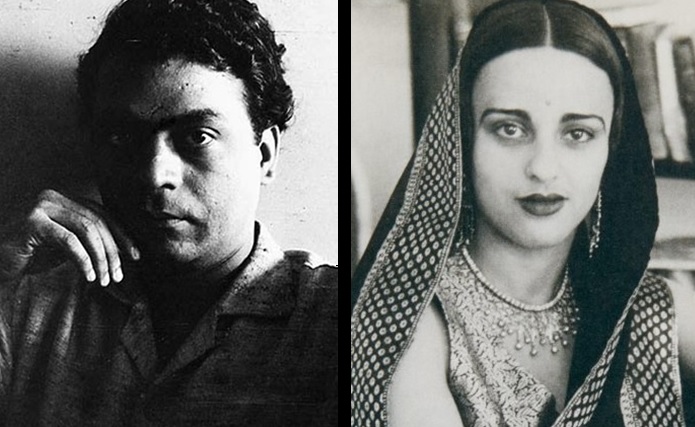Introduction
Contemporary artists, through their brilliant works of art, could not just draw collectors’ interest but increase the overall worth of the Indian art market manifold.
While art has often been referred to as an ‘alternative’ or ‘non-traditional’ form of investment, the evolution of the Indian art market since the advent of the 21st century indeed calls for a revaluation of this sentiment. According to the State of Art Market Report 2021, the collective turnover of Indian art sales recorded a rise from Rs 13 crore in 2000 to Rs 880.9 crore in FY21, a steep climb that speaks for itself. Moreover, another recent report by Indian Art Investor suggests that in the first half of FY22-23, the Indian art market generated a staggering Rs 582.7 crore. These figures are proof of the uninterrupted growth trajectory, which has also, in turn, resulted in an interest in Indian art in the global market.
Indian Art Market Sees A Paradigm Shift
One of the crucial aspects of this paradigm shift is structuring the art market with the emergence of reputed museums, private art galleries, and auction houses. Not only has this allowed the seasonal collectors to add to their collections consistently, but it has also facilitated a vibrant market that can cater to new collectors in terms of various price points.
The extraordinary oeuvres of India’s revered modernists serve as the cornerstones of this growth. Garnering phenomenal responses at auctions in the last few years, works by these artists remain highly sought after.
Artists Bring New Energy To the Art Market
 Tagdah Forest by Nandalal Bose, Watercolour on paper, 1938
Tagdah Forest by Nandalal Bose, Watercolour on paper, 1938
Many important figures in the discourse of modern Indian art hailed from the state of Bengal. For example, artist Nandalal Bose included scenes from Indian mythology, iconography, the female form, and village life influences in his works. Hailed as one of the greatest artists of the pre-modern generations, Nandalal Bose continues to pique the interest of art collectors in India. Fourteen works by the artist were sold at auctions in 2021 and generated revenue of Rs 1,22,98,172.
 Untitled (Radha And Krishna) by Hemendranath Mazumdar, Oil on canvas, 1940.
Untitled (Radha And Krishna) by Hemendranath Mazumdar, Oil on canvas, 1940.
Another important artist from the region was Hemendranath Mazumdar, who distanced himself from the prevalent call of revivalism in the early 20th century. Instead, he mastered the technique of Western Academism. He portrayed his muses ruminating while they conducted their domestic chores, showcasing their world without the sense of intrusion, exploitation, or obeisance. Given their rarity, works by Hemendranath Mazumdar are acquired by collectors enthusiastically. In 2021, his six works garnered a total sales of Rs 6,68,99,018.
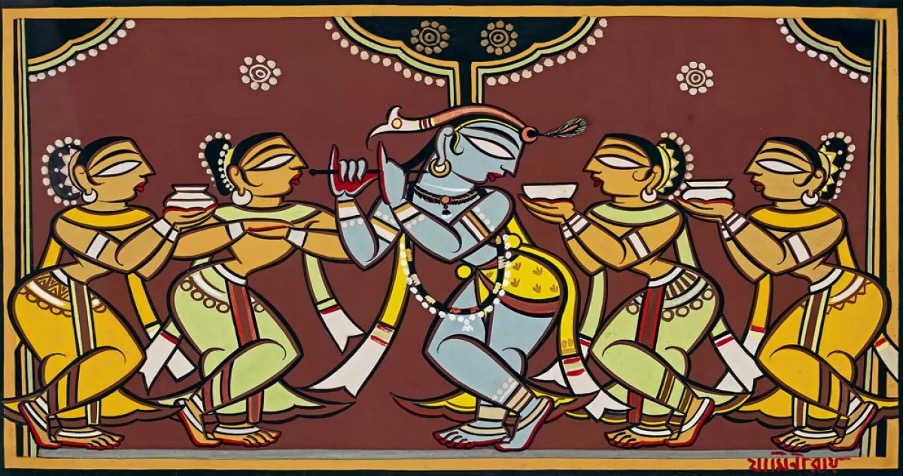 Untitled by Jamini Roy, Tempera on card, 1960.
Untitled by Jamini Roy, Tempera on card, 1960.
The contribution of Jamini Roy toward the emergence and expansion of modern Indian art can never be overstated. As a pioneer Indian modernist, Jamini Roy brought global recognition and appreciation to Indian art. His career of over six decades saw many turning points of experimentation. Even today, his works remain highly sought after by collectors of modern Indian art. In 2021, 73 works by Jamini Roy appeared in an auction and were enthusiastically acquired by collectors across the board with a total revenue of Rs 13,84,17,688.
 The Head by Ganesh Pyne, Tempera on canvas, 1977
The Head by Ganesh Pyne, Tempera on canvas, 1977
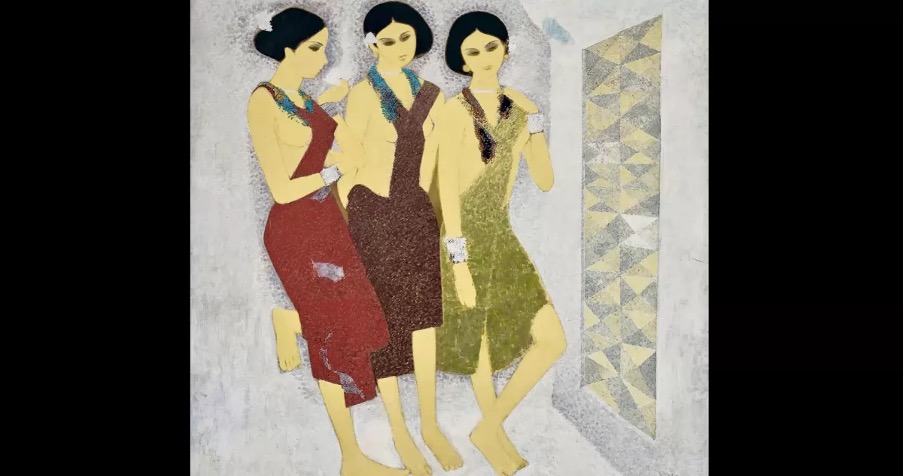 Untitled (Three Women) by N.S Bendre, Oil on canvas, 1972.
Untitled (Three Women) by N.S Bendre, Oil on canvas, 1972.
On the other hand, the post-independence generation of artists was inspired by the globalisation of arts and various art movements that had sprung in Europe. They did not want to be bound by the definition of art set by their old-school predecessors. They wanted to break away from these traditional practices to explore the individuality of expression through their art.
Ganesh Pyne came to understand the amplification and distortion of the images to express varied emotions. Initially, the artist painted watercolours and sketches of glorious mornings and wayside temples before eventually finding his preferred medium tempera. His visual vocabulary also evolved, both in terms of form and palette. Bestowing a skeletal element to his figures, the canvases were stripped of colour and dominated by dark shadows reminiscent of phantasms. As many as 30 unique works by Ganesh Pyne were auctioned last year and garnered Rs 10,41,45,251.
Well-known for pioneering the pointillist technique in India, artist N.S. Bendre executed his canvases in a pattern of intricate dot work that required perfect integration of colour and form. An avid traveller with an eye for natural beauty, Bendre was greatly inspired by the poetic landscape of India and its rural life and was drawn towards the simplistic charm of a woman’s world. In 2021, 27 works by Bendre were showcased in different auctions and generated Rs 36,17,74,831.
Artist Jehangir Sabavala remains one the most bankable artists of modern Indian art, and seasoned collectors eagerly acquire his works. Defined by its attributes of solitude amid elegance, his subdued compositions establish his inclination towards the triggers of light and shadow. Ten of his works generated Rs 28,16,83,891 in 2021.
A largely self-taught artist, Krishen Khanna is best known for his ‘Bandwalla Series,’ inspired by Indian culture and depicted in riotous colours, and his works exploring Christian imagery. He has gained appreciation globally for his command over storytelling through his art, weaving narratives where he plays the narrator. In 2021, Khanna’s 50 works were sold at auctions, generating Rs 14,69,37,204.

Aircraft Waiting In Wings by Jitish Kallat, Acrylic on canvas, 1998
The experimental works by India’s contemporary artists comment on the political and social challenges of the day while drawing inspiration from India’s rich heritage. Their creations have been displayed around the world, demonstrating the variety of ideas and cultures that the nation fosters. A multimedia artist with his oeuvre of painting, photography, collages, sculpture, and installation, Jitish Kallat’s work is often biographical, addressing profound themes of time, death, personal relations, etc. Some of his best works celebrate his home city of Mumbai. Ten works by the artist were auctioned in 2021 and accounted for a total sale of Rs 1,72,85,473.

For A Life Lost Between B Ullets And Bombs (Diptych) by T.V. Santhosh, Oil on canvas, 2010.
Works by artist TV Santhosh revolve around real-time experiences and incidents. He creates an image out of sheer translucent borders highlighting the figure, elaborating and creating visual depth to translate his final thought. Seven works by the artist were auctioned in 2021 and garnered a total revenue of Rs 30,96,818.
The top artists to watch in 2023 are a testament to the diversity and dynamism of the Indian art market. From traditionalists who continue to breathe life into classical forms to contemporary visionaries pushing boundaries in their quest for innovation, these artists are shaping the future of Indian art.
As the global art community turns its attention towards India, we can anticipate a continued surge in interest and investment. The fusion of tradition and modernity, along with the rich cultural tapestry that India offers, is a wellspring of inspiration that promises to captivate collectors and art enthusiasts alike.
In this vibrant ecosystem, both artists and collectors will play pivotal roles in shaping the narrative of Indian art. As these talented creators redefine artistic boundaries and inspire new generations, we can only look forward to witnessing the continued evolution of the Indian art market in the years to come.
Read Also:
India’s Art Market Soars as Mumbai Prepares for Inaugural Art Fair

Contributor

